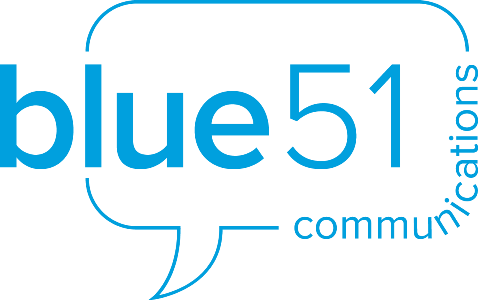Confession time- I don’t believe in writer’s block. That’s not to say that I never struggle for content ideas, but I see it more as a depletion of mojo. I know that for many people, coming up with the stuff to write about in their business is one of the things that really keeps them up at night. Some people lose half a day to strangle out some words for their email list. Some people try and write every page of their website for far too long. Sometimes people feel like they’re writing the same thing over and over and over again for their social media, and other people just are completely over it because they find that constantly coming up with ideas is exhausting.
There’s an emotional, financial, and personal impact on feeling blocked. But most importantly, writer’s block robs people of the chance to get to know you and then buy from you. We know that people buy from people they like, and people get to know you through the stories you tell. And the stories that you tell are a way to feel energised by what you do and not drained. I know you’re busy, juggling a million things. You know you need to post, but you don’t need one more decision or waste time over-analysing every possibility, or stare out the window wondering what to write.

Hello, brainstorming, you crafty minx, you!
Brainstorming is fun, energising, no holds barred. When it comes to brainstorming, the whole goal is to have a bucketload of writing ideas for your brand. With a bucketload of ideas, it’s almost impossible not to feel inspired and enthusiastic as you share your story in a way that feels right.
This post is all about coming up with ideas for your brand. Of course, the editing and curating, voice and point of view are a whole different kettle of fish. So too is clarity and messaging and audience. That comes later. But first you need that pool of ideas to play with.
There’s lots of different approaches to brainstorming. You can start with a big picture and a plan for the time period ahead, like month, week, year. When it comes to something more established, like a blog plan, I like to have a year’s worth of content plotted out in advance. Some people like to go with monthly themes, and they link that to things like holidays, seasonal activities, things that are happening in their professional life and personal life. Some like to brainstorm against the core topics for their brand or their industry. Themes lend themselves beautifully to a brainstorming session. For example, scribble down some ideas for your brand against these themes:
Quick wins
Momentum
Clarity
Consistency
Authority
Accessibility
Grinds my gears
I bet my bottom dollar you could have five ideas against each, minimum, am I right?
On this- my Content Blast clients know I create content plans for them that are based on pillars. The pillars we create for their brand’s content marketing are tightly aligned to their broader business goals and positioning. It’s content that ensures that whatever they’re sending out is actually focused to what it is they want to be known for. It’s easier to write strategically, and it stops them being pigeonholed as something that they don’t necessarily want. The pillars I create for my clients start life as a structured, strategic, ridiculously fun brainstorming Q&A session.
Here’s a Blue51 example I prepared earlier:
One of my pillars is communications. From a brainstorm against that pillar automatically flows ideas such as how to plan, how to decide which tactic is right for which message, the nuts and bolts of how to write for your brand, how to craft a story-based about page. That’s the basics- the how, what. I always love a why concept and the broader messaging behind the action-based content. Why is storytelling important? What’s the theoretical concept behind that?
Another way to get ideas for your content is through thinking about the work that you actually do, work that you’ve completed. Think of a specific project, the principles behind it, how you did it, how you implemented it, and the outcome. Don’t cringe, but this is a case study, or in more evocative language (and infinitely more fun for the word nerds amongst us) it’s the hero’s journey.
Sometimes people’s brains are so full of stuff that they feel devoid of creative, fresh ideas and inspiration. That’s where writing prompts can be really, really helpful. I love writing prompts so much so that I’ve created worksheets of them. They’re designed to inspire and spark your imagination. They’re not a new concept; I’ve been using writing prompts for forever, often in creative writing. I use them in my own business and with my clients almost every day. They’re how I get words out of my head or out of people’s heads and onto the page or screen.

Fancy a quick prompt?
Work love: spend 15 minutes doing a quick brainstorm about why people love working with you beyond the tangible benefits that you provide. Think about things like what makes you feel good, or when do you feel good about what you do?
Another way of doing a really fabulous brainstorming session is starting with a mind map. Put a central word in the middle of a piece of paper, and then let your ideas triggered from or by that word flow from it. You can use mind maps for things like your service offerings through imagining what their title could conjure up in the minds of your clients and the minds of your audience. Use them as to spark words to create ideas of topics that could become your content.
When you’re doing a brainstorming session, as I said, the goal is to get as many ideas as you possibly can. You want to fill that bucket. Of course, some of them you won’t be able to use. Some might be more suitable for colloquial writing, such as your social media captions, while others might be for your blog posts. Others, you might be able to structure into the outline of a book. As you go, you can also break up how you could potentially structure your ideas to keep it interesting for you and your audience. I’m talking instructional, tips and tricks, tutorials, overcoming a problem. You can do interviews with relevant people. You can do case studies. You can do reviews. Lists are always, always popular. Three ways to dot, dot dot. Seven reasons why dot, dot, dot. Your five favourite dot dot dot. Of course, there’s always a place for a rant, good news stories, predictions and reviews.
Now- make yourself a gorgeous cup of something lovely, get brainstorming and let me know how you go!
I love writing about communications, writing, life in business and life in general! If there’s something specific you’d like me to cover in my writing, please shoot me an email or give me a buzz, and I’ll do my best to help, or address it in an upcoming blog post or on my social media platforms.
